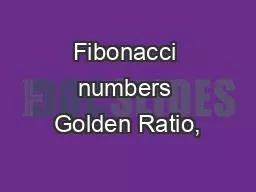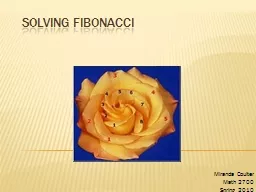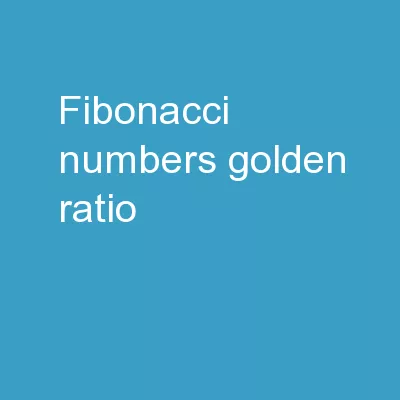PPT-Fibonacci numbers Golden Ratio,
Author : katrgolden | Published Date : 2020-10-06
recurrences Lecture 27 CS2110 Fall 2018 Fibonacci Leonardo Pisano 11701240 Statue in Pisa Italy Announcements A7 NO LATE DAYS No need to put in time and comments
Presentation Embed Code
Download Presentation
Download Presentation The PPT/PDF document "Fibonacci numbers Golden Ratio," is the property of its rightful owner. Permission is granted to download and print the materials on this website for personal, non-commercial use only, and to display it on your personal computer provided you do not modify the materials and that you retain all copyright notices contained in the materials. By downloading content from our website, you accept the terms of this agreement.
Fibonacci numbers Golden Ratio,: Transcript
Download Rules Of Document
"Fibonacci numbers Golden Ratio,"The content belongs to its owner. You may download and print it for personal use, without modification, and keep all copyright notices. By downloading, you agree to these terms.
Related Documents














